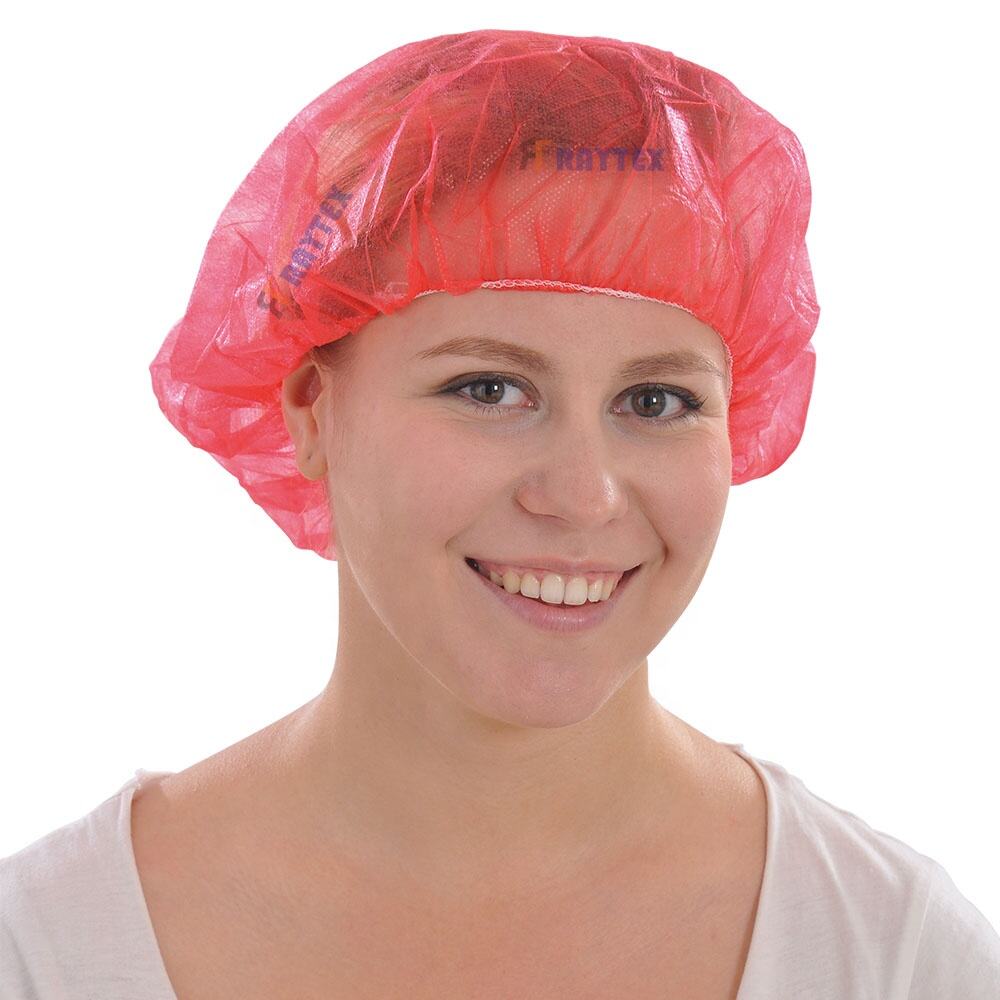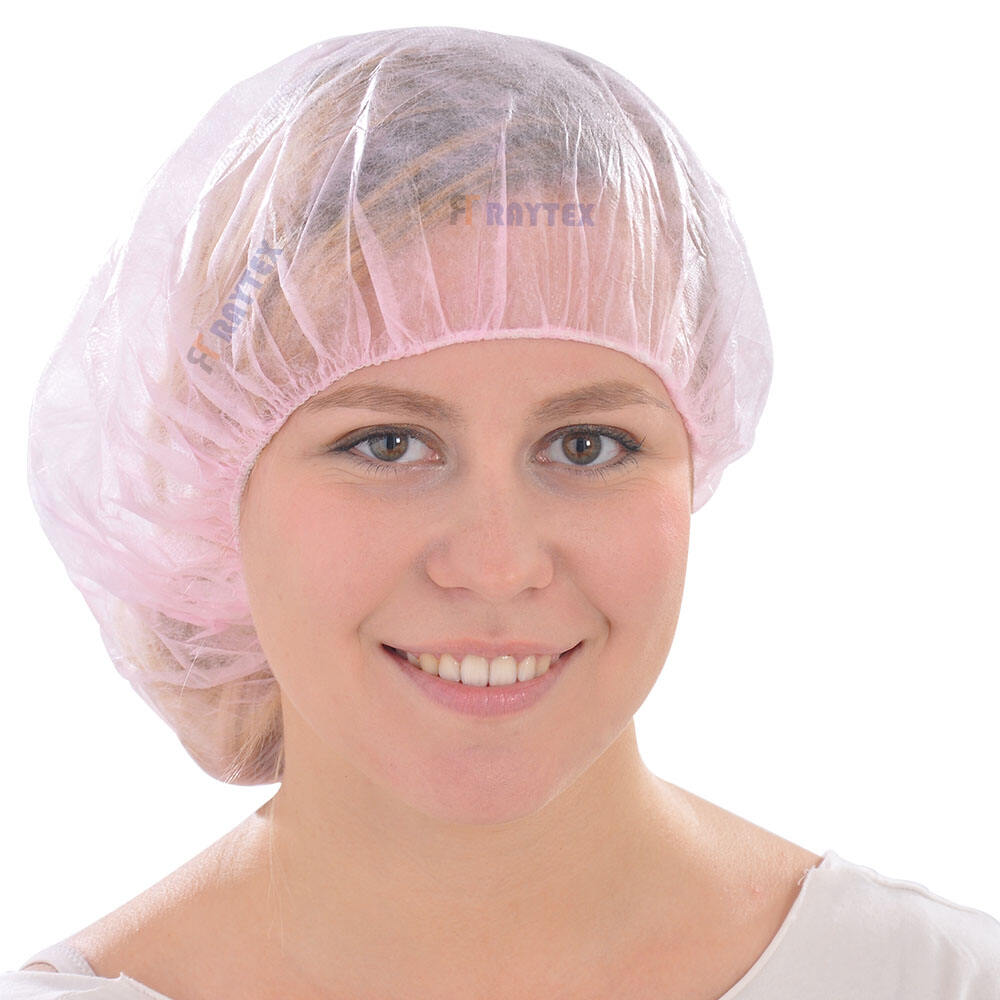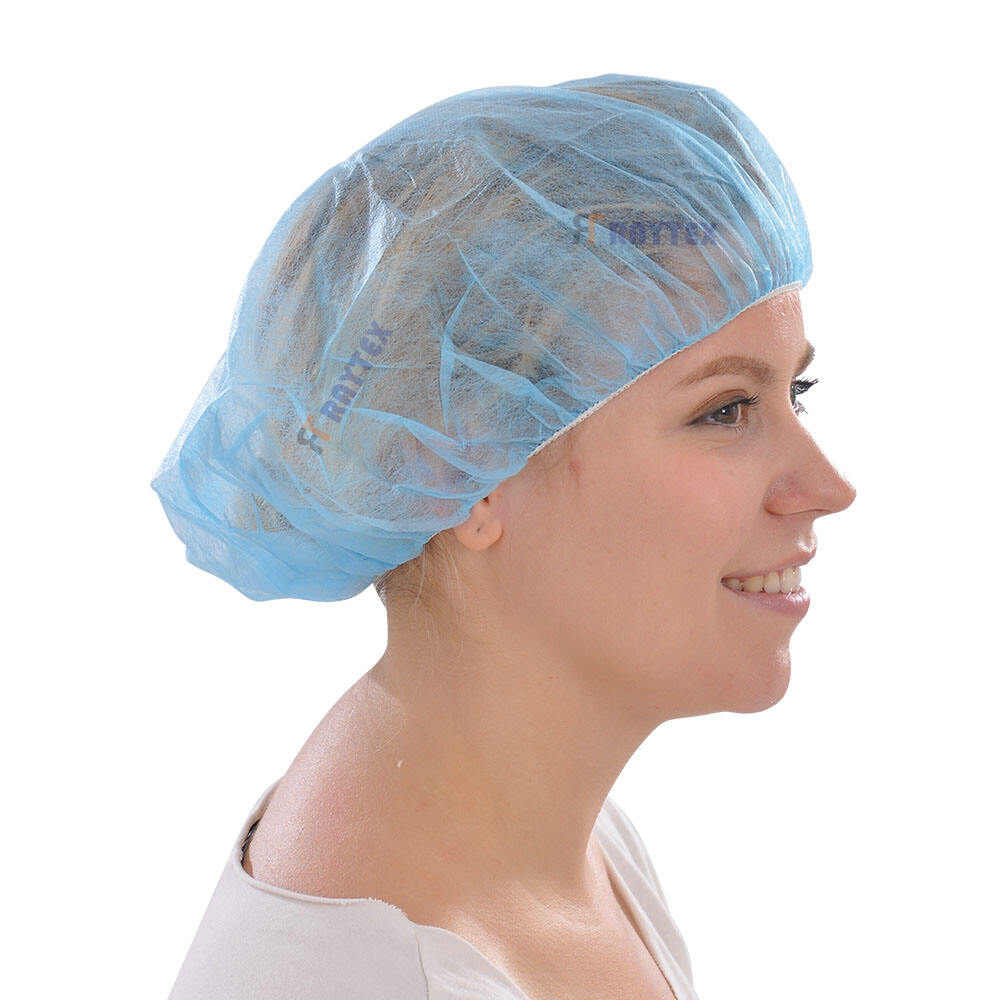Bouffant caps for chemical production cleanrooms are specialized hair coverings designed to prevent contamination in controlled environments where chemicals, pharmaceuticals, or specialty materials are manufactured, ensuring that hair, dandruff, and other particulate matter do not compromise product purity or worker safety. These caps are engineered to meet the strict standards of chemical cleanrooms (often classified as ISO 7 or ISO 8), where even small particles can react with chemicals, contaminate batches, or damage sensitive equipment. Constructed from low-linting, non-woven materials such as polypropylene or SMS (spunbond-meltblown-spunbond) composites, bouffant caps provide complete coverage of all hair—including long hair, buns, or ponytails—with a voluminous, pouch-like design that accommodates various hair lengths without compressing or causing discomfort during extended wear. The material is chosen for its resistance to chemical splashes and vapors common in production, such as solvents, acids, and bases, ensuring the cap remains intact and does not degrade when exposed to these substances. A secure elastic band at the edge of the cap creates a tight seal against the hairline, preventing hair from escaping and blocking the entry of chemical aerosols or fumes into the cap, which could irritate the scalp or contaminate hair. The non-woven fabric is breathable to prevent overheating, a critical feature in cleanrooms where workers may wear multiple layers of PPE, and is electrostatically treated to minimize static discharge—a key consideration in environments with flammable chemicals, where static sparks could ignite vapors. Compliance with industry standards is essential, with caps meeting ISO 14644-1 for particle control and EN 13485 for medical device quality management, even in non-medical chemical settings. They are often disposable to avoid cross-contamination risks, with sterile packaging available for use in aseptic chemical production. Additionally, these caps are tested for tensile strength to ensure they do not tear during donning or doffing, a common source of particle generation. By integrating bouffant caps into cleanroom protocols, chemical production facilities reduce the risk of batch contamination, ensure compliance with OSHA and EU REACH regulations, and protect both product integrity and worker health, making them an indispensable component of chemical cleanroom PPE.


